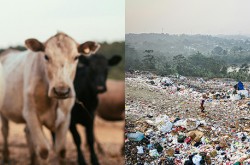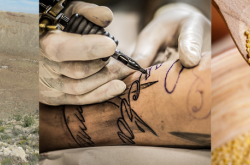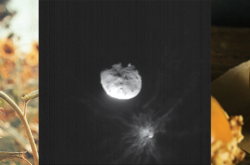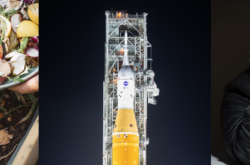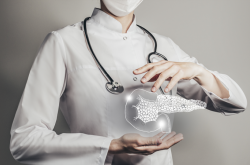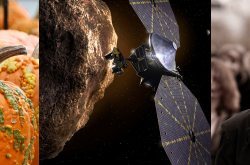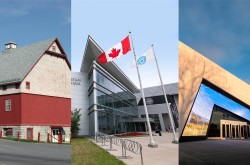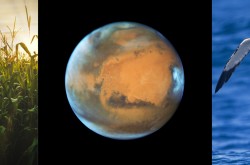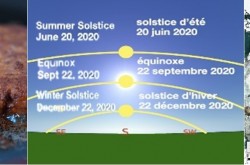3 things you should know about flushing the toilet, artificial photosynthesis, and volcanic activity on Jupiter's moon

Meet Cassandra Marion, Renée-Claude Goulet, and Michelle Campbell Mekarski.
They are Ingenium’s science advisors, providing expert scientific advice on key subjects relating to the Canada Aviation and Space Museum, the Canada Agriculture and Food Museum, and the Canada Science and Technology Museum.
In this colourful monthly blog series, Ingenium’s science advisors offer up quirky nuggets related to their areas of expertise. For the January edition, they explain why you should close the toilet lid before flushing, how plants can grow without light, and extended volcanic activity on Jupiter's moon Io.
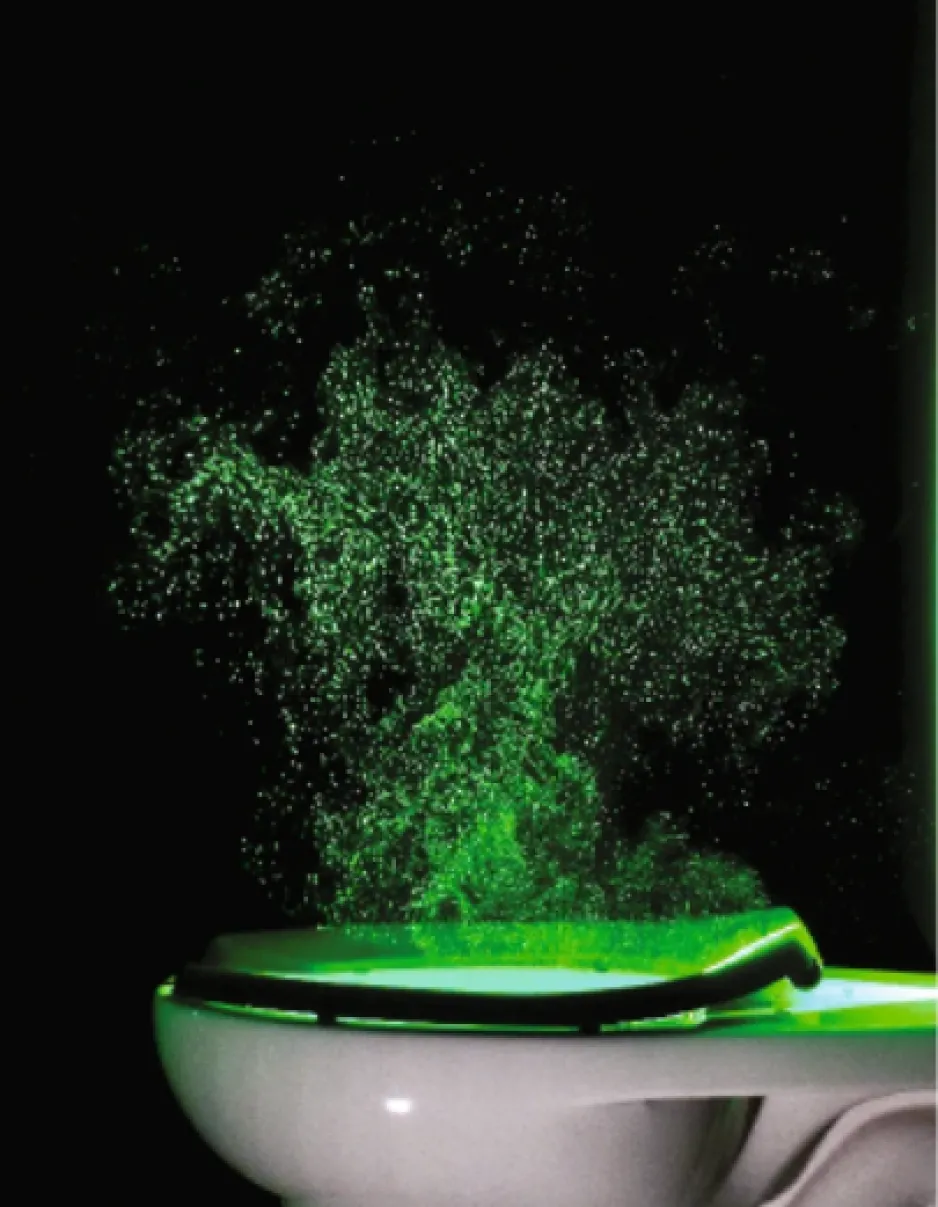
Green lasers show the plume of aerosolized toilet water above the seat 4.4 seconds after flushing.
Public service announcement: Close the lid when you flush the toilet
Toilets are wonderful inventions. In fact, many scientists and historians argue that the invention of the toilet has saved more lives than the discovery of penicillin, insulin, or vaccines! They take our bodily waste quickly and safely from our homes and send it to sanitation systems for treatment. Nearly 50 diseases can be spread through human feces – including dysentery, cholera, and typhoid. Without toilets, our waste would sit around, contaminating our water, soil, and homes with deadly diseases.
However, as good as toilets are at removing waste, ongoing research is showing that they are (unfortunately) also good at throwing waste into the air.
As toilets flush, the force of the flush can splash the contents of the toilet bowl into the air, creating tiny droplets called aerosols. These tiny droplets spread around the room, covering nearby surfaces and lingering in the air for several minutes. In addition to being disgusting, these tiny droplets can also carry pathogens. Early in the COVID pandemic, it was shown that COVID-19 viruses could be spread by this method.
New research from the University of Colorado Boulder allows us to actually see this phenomenon in action. Neon green lasers allowed the researchers to see – and measure – the spray created by flushing.
They found that after a flush, droplets sped through the air at up to 2 meters a second, which means you can’t out-run the spray. They also found that the droplets could reach over a metre and a half above the surface of the toilet seat, which puts them right at face level. This is especially concerning given that the nose and mouth offer gateways for pathogens to enter the body of unsuspecting bathroom goers.
So what’s to be done in order to avoid a face full of aerosolized toilet water? Luckily, there’s an easy solution. The toilet lid. Closing the lid before flushing keeps nearly all of spray where it belongs: in the toilet.
Toilets are a wonderful invention…but so are toilet lids. Make sure you’re using them to their fullest potential.
By Michelle Campbell Mekarski
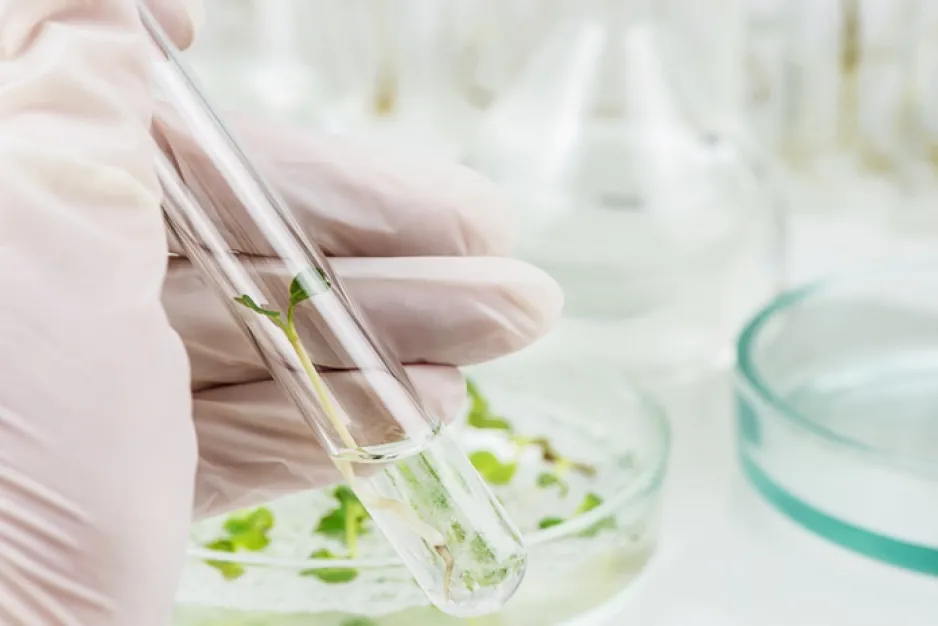
Researchers were able to show that lettuce grown in the dark is able to use a product of “simulated” photosynthesis to produce energy and to build proteins and carbohydrates.
Growing plants without light is impossible? Think again!
Imagine a future where we can grow plants without providing them sun or artificial light. This may just seem like a houseplant enthusiast or greenhouse grower's dream, but some researchers are showing it may actually be feasible!
For most of our food, we can thank the sun! Without sunlight, plants and other organisms such as algae would not be able to create the compounds they need to grow and reproduce. Adequate lighting is a major limiting factor for growing food, especially indoors. In fact, plants only convert about 1% of the light energy they're exposed to into biomass, or plant tissue. Scientists have long tinkered with trying to make photosynthesis more efficient. But now, a lab at the University of California, Riverside, has taken a different approach and innovated a ground-breaking "artificial photosynthesis" system that removes light from the equation, and makes it possible to grow algae and plants in the dark! Sounds like science fiction? It's not!
Photosynthesis is a complex process that captures the energy from sunlight, allowing plants to make carbohydrates (sugars and starches) from water and carbon dioxide (CO2). The process the researchers used to replace this is called electrolysis. Electrolysis is a way to use electricity to make chemical reactions happen. It is widely used in the manufacturing industry for example to purify copper ore and to plate metals like chrome car parts.
With electrolysis, it's possible to transform water and CO2 into a solution containing different carbon products such as acetate, alcohols, and ethylene (the gas that fruit release as they ripen). Acetate is part of vinegar, and researchers found that when they fed acetate in the right amounts, plants and other organisms can use it as a source of carbon and energy thus, replacing photosynthesis! This research team’s breakthrough was creating a new type of electrolysis system that makes solutions containing large enough concentrations of acetate to grow organisms. This discovery allowed them to grow algae, yeast, mushrooms, and nine types of crop plants, including lettuce, tomato, rice, pepper and canola, independently from photosynthesis!
What could this mean for food security? By decoupling photosynthesis from the production of certain foods, for example yeast and algae, which are usually grown using products derived from plants and fossil fuels, we could free up this material for other uses, or create these foods without needing the inputs. This system could also provide a boost to plants, as the research team was able to show that plants fed the high acetate solution through their roots could incorporate it in their tissues and proteins and use it for energy. This technology may even allow us to produce food in challenging environments, such as in space. In fact, this project is part of the winning submissions in phase one of the NASA & CSA Deep Space Food Challenge!
This innovation is not a miracle solution, but a step in a very interesting direction. This technology doesn't divorce food production from the sun completely. The electrolysis system runs with electricity, which the study authors propose could be provided by solar panels. Another interesting facet is that this technology requires CO2 as an ingredient, so it could play a part in carbon capture from our atmosphere.
In light of our growing world population, the climate crisis making it more difficult to grow crops, and renewed investments in space exploration, this "artificial photosynthesis" system could be a promising piece of the puzzle in feeding more people with fewer inputs…and in faraway places!
By Renée-Claude Goulet
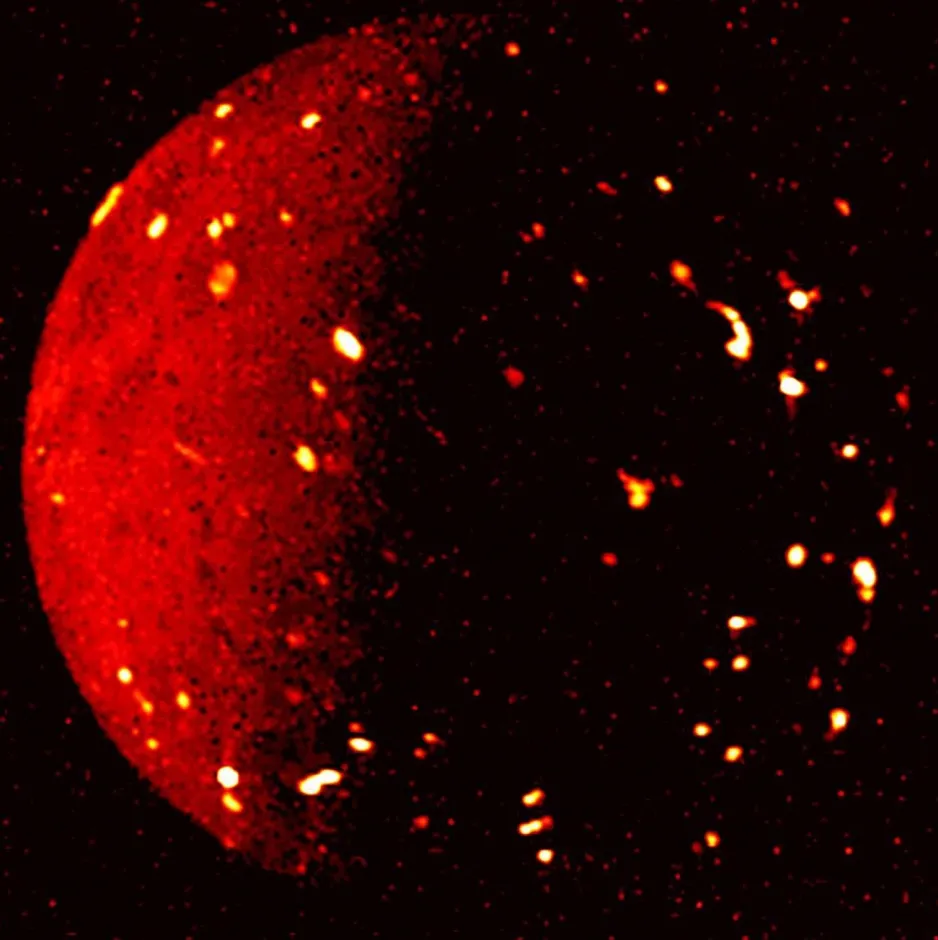
An infrared view of Jupiter’s volcanic moon Io in July 2022 by the Juno spacecraft. Brighter spots represent higher temperatures, in these cases active volcanoes.
Jupiter’s volcanic moon Io’s recent outburst
In fall 2022, the Lunar and Planetary Institute’s Io Input/Output observatory recorded massive volcanic outbursts from the most volcanically active body in our solar system, Jupiter’s moon Io. Specifically, the observatory detected a cloud of sodium gas around Jupiter that lasted several months. This was accompanied by a brightening (an increase) in the sulfur-rich plasma torus – gases sourced from Io’s eruptions that form a ring around the giant planet.
Io’s surface is covered in hundreds of volcanoes as shown in the infrared image above. Slightly larger than the Earth’s Moon, Io is similarly tidally locked to its host planet so that it rotates once on its axis for every one orbit of Jupiter, resulting in the same side of the moon always facing Jupiter. Io is subjected to immense tidal forces and is basically in a continuous gravitational tug-of-war with the massive planet Jupiter and with two others of its large Galilean moons, Europa and Ganymede. These forces squish and squeeze Io which results in the internal friction and heating thought to drive its volcanism. In fact, this internal friction creates 20 times more heat flow than that of the Earth. Side note: Earth is the second most active volcanic planetary body in our solar system.
Volcanoes on Io are unique in that they dominantly consist of lava lakes which fill massive calderas or depressions referred to as patera. The patera are capable of massive eruptions that create sulfur-rich vapour plumes reaching hundreds of kilometers above the surface. These volcanic edifices are spread out around the globe, constantly resurfacing the planet with lava flows, sulfur dioxide, and ash. Another intriguing characteristic are Io’s super hot lavas, with patera measuring in at more than 1,600°C. Though the interior is hot, the surface temperature on Io is about -130°C, which leads to the development of sulfur dioxide snowfields. Extensive volcanism and high temperature lavas hint at the presence of a global magma reservoir below the surface, but no direct evidence has been available. Eruptions of sulfur from Io are also connected to the ultraviolet auroras on Jupiter.
Io has a very thin collapsible diurnal atmosphere of sulfur dioxide. Diurnal in the sense that when in shadow, or at night, the sulfur dioxide atmosphere condenses to frost, whereas in sunlight it converts back to gases.
A series of spacecraft have visited this sulfur-rich moon, including Voyager, Cassini, Galileo, New Horizons and, most recently, Juno. The Juno spacecraft completed a close flyby in December 2022, and is set to complete two more close flybys of Io in December 2023 and February 2024, in the hopes to better understand the relationship between Io’s volcanic eruptions and Jupiter’s aurora and magnetosphere.
By Cassandra Marion
Enjoying the Ingenium Channel? Help us improve your experience with a short survey!








